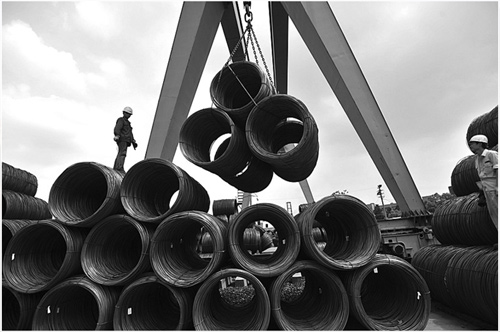Abstract Overcapacity is one of the important factors that have been suppressing the economic benefits of steel companies. Due to the huge capacity of the steel industry during the economic upswing, there is insufficient demand in the economic downturn. For a long time, the growth rate of China's steel production capacity is much higher than the demand growth rate. In this way, the steel industry is "more...
Overcapacity is one of the important factors that have been suppressing the economic benefits of steel companies. Due to the huge capacity of the steel industry during the economic upswing, there is insufficient demand in the economic downturn. For a long time, the growth rate of China's steel production capacity is much higher than the demand growth rate. In this way, the steel industry is moving further and further in the cycle of “more containment and excessâ€. Recently, the Ministry of Industry and Information Technology and the National Development and Reform Commission jointly formulated an overall plan to resolve overcapacity as a guideline for the next phase of efforts to resolve excess capacity. 
In addition to external factors, the steel industry itself should also shoulder unshirkable responsibility for overcapacity. The most direct indicator of capacity utilization is capacity utilization, which is also an important indicator for overcapacity in the world. According to the experience of the United States, when the industrial capacity utilization rate exceeds 95%, the utilization rate of representative equipment is nearly all; when the capacity utilization rate is 81% to 90%, normal overcapacity occurs; when it is lower than 81%, it is more serious. Overcapacity. From the data point of view, the crude steel production capacity increased from 420 million tons at the end of 2004 to 970 million tons at the end of 2012, the increase is equivalent to the sum of the crude steel output of the 2nd to 10th countries in the world's steel production in 2012, resulting in 2012 crude The steel capacity utilization rate is only 72%, far below the reasonable level. At the same time, China's low-end steel accounts for the vast majority of production capacity. Most high-end steel still needs to rely on imports. Low-end steel is flooding the market, and huge production capacity is difficult to be properly digested by the market, while high-end steel demand is occupied by foreign steel mills. The situation of oversupply of products is difficult to change in the short term, and the difficulty of exporting in the international market is also increasing. This is really a depressing situation. The essential reason is that the technology investment is insufficient, which leads to the lack of competitiveness of China's high-end varieties of steel and the low added value of products.
Written here, everyone must have a preliminary understanding of the overcapacity situation in China's steel industry. For the overcapacity of steel, it can only be seen with the attitude of "sadness, anger, and anger". So can the four "batch" cure the overcapacity of steel? As the saying goes, "The disease is like a mountain, and the disease is like a silkworm." Effectively eliminating production capacity is a long-term and arduous project. Whether it is a local government that promotes overcapacity in steel or a steel company itself, it should take good care of its position. What the government needs to do is to establish fair competition rules and continue to regulate. Steel companies need to continuously increase the added value of their products and improve their production capacity. The market naturally survives the fittest.
Jinwu Glass Fiber Co., Ltd , https://www.jinwuwindows.com